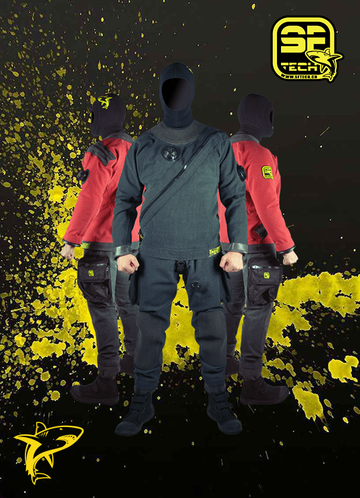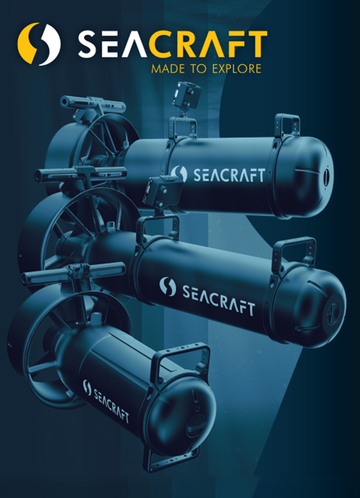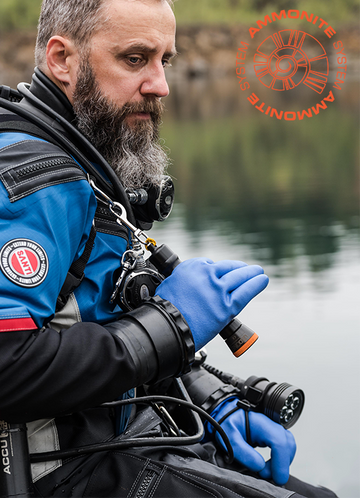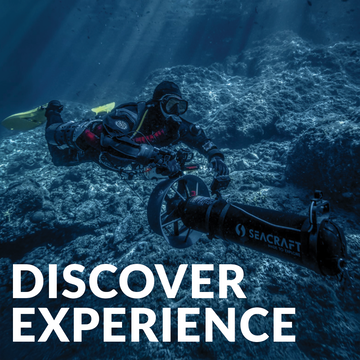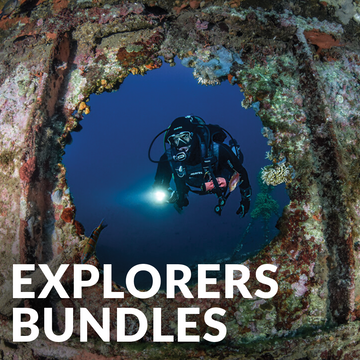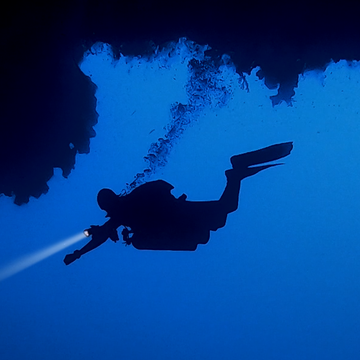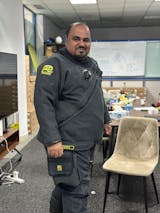The famous Blue Hole in Dahab, Egypt, is a bucket-list dive site for almost every technical diver. The sinkhole plunges approximately 120 metres (≈ 400 ft) in its deepest interior. At roughly 55 metres (≈ 170 ft) down lies the opening to the “infamous” Arch — a natural tunnel about 26 metres long that connects the Blue Hole to the open sea. Beyond that Arch, the seabed drops off into several hundred metres of open water.
This site is widely regarded as perhaps the highest death-rate dive site in the world, with its nickname "The Diver's Cemetery" — but not solely because of its depth. The reasons are far more human, and far more avoidable.
Let’s dig deeper into why the Blue Hole has claimed so many lives, with a few examples of real cases and up-to-date insights.
What the data and reports say
Estimated fatalities: There is no official, publicly published record of all deaths at the Blue Hole. However, multiple reputable sources estimate between 130 and 200 deaths over recent decades — including scuba divers, freedivers, and snorkellers.
Concentration of incidents: A large number of fatalities are linked to attempts to pass through the Arch. That entry point is at ~55 m — well beyond recreational diving limits. Divers passing through face depths and overhead demands, they may not be prepared for. This often leads to increased stress, higher gas consumption, and higher nitrogen narcosis (assuming most recreational divers dive with air).
Recurring causes: Patterns emerge in reported investigations, with already mentioned: nitrogen narcosis and impaired judgment; inadequate or single‐tank gas planning; dives beyond certification or experience; solo or unguided deep attempts; freediver blackouts or shallow‐water blackouts. Many of the older fatalities occurred when permits and guide protocols were much less regulated. Today, it is nearly impossible for a recreational, single-tank diver to attempt the "Arch dive" due to many regulations and controls, and more accidents in the Blue Hole involve over-confident or under-prepared technical divers rather than naive recreational ones.
So, to sum these causes up:
· Nitrogen narcosis and impaired judgement
· Inadequate or single-tank gas planning
· Attempts far beyond certification or experience
· Solo or unguided deep dives
· Blackout incidents among freedivers
· Lack of redundancy, bailout, or deco capacity
Why the Arch Is a Psychological Trap
The Arch is visually deceptive and tempts divers to exceed their training. With the Red Sea’s incredible visibility, the Arch opening looks closer than it is and achievable. But perception is not reality. It’s a lure. Many divers descend with recreational setups, only to find themselves in a much more serious environment, they aren’t trained for.
At 55+ metres:
- You are deep into narcosis if you don’t use Trimix, even if you “feel fine.”
- Gas consumption is more than 6,5 times higher compared to the surface (assuming the same breathing pattern).
- You are in mandatory decompression “territory”
- You are passing through an overhead environment 26 meters long
- You have no direct ascent, not only due to the overhead, but also due to the decompression obligation
Many divers reach the Arch in a recreational mindset — and that mindset does not belong there. This is the same psychological trap that has killed cave divers for decades: “It’s right there… just a little further… I can make it.”
What Are the Main Risk Factors
Poor gas planning and minimal redundancy. Many older and even some newer fatalities involve divers with single back-mount cylinders, no deco bottles, no stages, minimal bailout plan. That leaves almost no margin for error.
Nitrogen narcosis and human factors. At depths, narcosis can dramatically impair judgement and motor skills. This can become confusing and disorienting very fast. Some cases describe divers who removed regulators at depth or attempted to dump gas from their BCD instead of adding gas while descending at higher and higher speed, all without realizing it.
Lack of unified incident reporting. Without central registry, many accidents go unreported or are anecdotal. Fatality numbers are approximate at best, and trends or root causes are harder to study.
Notable Cases
Probably the most famous case is that of Russian-Israeli instructor Yuri Lipski (April 28, 2000), who died at ~115 m while filming his own dive. His helmet camera recorded his uncontrolled descent, panic, regulator removal, and inability to ascend. He carried a single air tank with no stage or deco backup. His death was attributed to a lack of technical experience, severe equipment unpreparedness, overweighting, and sadly, overconfidence.
The most famous freediving case is that of Irish freediving safety diver Stephen Keenan (July 22, 2017), who died during a deep freedive rescue attempt in the Blue Hole. His death highlights how even expert skill and rescue experience cannot always overcome risks when conditions change or tasks become unexpectedly demanding. His death was attributed to a blackout while attempting to locate and assist his partner, Alessia Zecchini, who became disoriented while crossing the Blue Hole on a single breath.
Recent technical diver deaths: In recent years, the site has continued to claim casualties among divers who believed they were “beyond the basics” but were still underprepared. For example, dive industry reports list multiple technical diver fatalities caused by equipment failure, narcosis caused by deep air, or gas mismanagement during Arch attempts or deep bottom dives.
The Human Factor Behind Blue Hole Tragedies
- Overconfidence & ego
- Task loading under narcosis
- Tunnel vision and goal fixation
- Poor gas awareness under stress
- Normalization of deviance (“others did it, so I can too”)
- Weak team structure or solo attempts
- Inability to abort early
The truth is that at depth, under the influence of narcosis, divers don’t realize their impairment. They think they are making rational choices, when in reality, they are “drunk on nitrogen”, blind to risk, and committed to a bad plan. By the time they realize they are in trouble, it is usually too late (especially for single-tank, no-redundancy divers) to save them.
Why People Think the Blue Hole Is "Dangerous"
The Blue Hole is not the most technically difficult site in the world by any means. But it has the perfect combination of elements that exploit human weakness:
· Easy entry
· Inviting environment
· Big reputation
· Peer pressure and “badge collecting”
· The illusion that visibility = safety
· A deep overhead target within reach
The site does not kill divers. It exposes their mindset, their preparation, and their discipline.
So, Is the Blue Hole Actually Dangerous?
Here is the truth, with no emotion:
➡️ For properly trained, properly equipped, well-planned technical teams:
The Blue Hole and the Arch can be a controlled, beautiful, and fairly simple dive.
➡️ For divers who approach it with a recreational mindset, poor gas planning, or ego:
It can be unforgiving.
Here’s a critical statement: The Blue Hole is not inherently deadly. When treated with respect — with proper training, equipment, planning, correct gas mixtures, and conservative execution — it is absolutely diveable and spectacular, with no or minimal current, nice visibility, marine life encounters, and a beautiful spot for decompression obligations.
What kills divers here more often than geology or depth is human error.
The Blue Hole’s reputation makes it a bucket-list destination for many technical divers — and that celebrity status is half the problem.
If you approach the Blue Hole with humility, respect, preparation, and the right mindset — stay within your limitations, dive with appropriate gas selection, redundant systems, and a dive team who understands the terrain — then you can enjoy this beautiful dive site.
In the end, the Blue Hole’s greatest lesson is this: Wonder demands more than admiration—it demands discipline.
